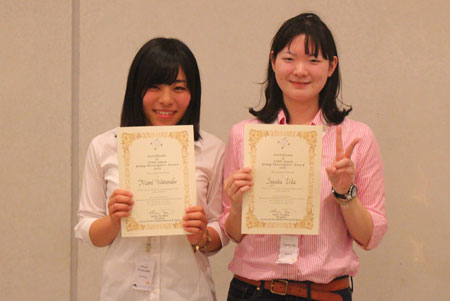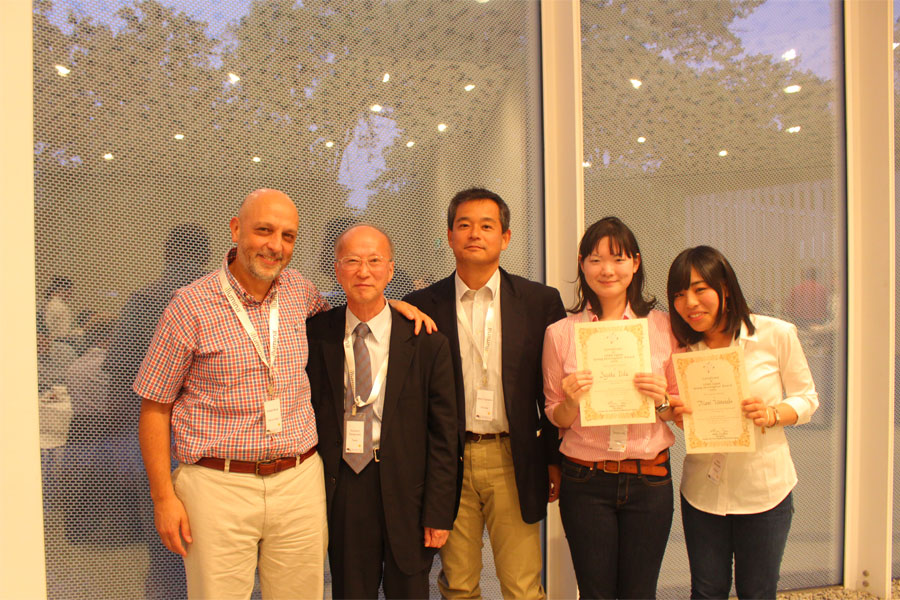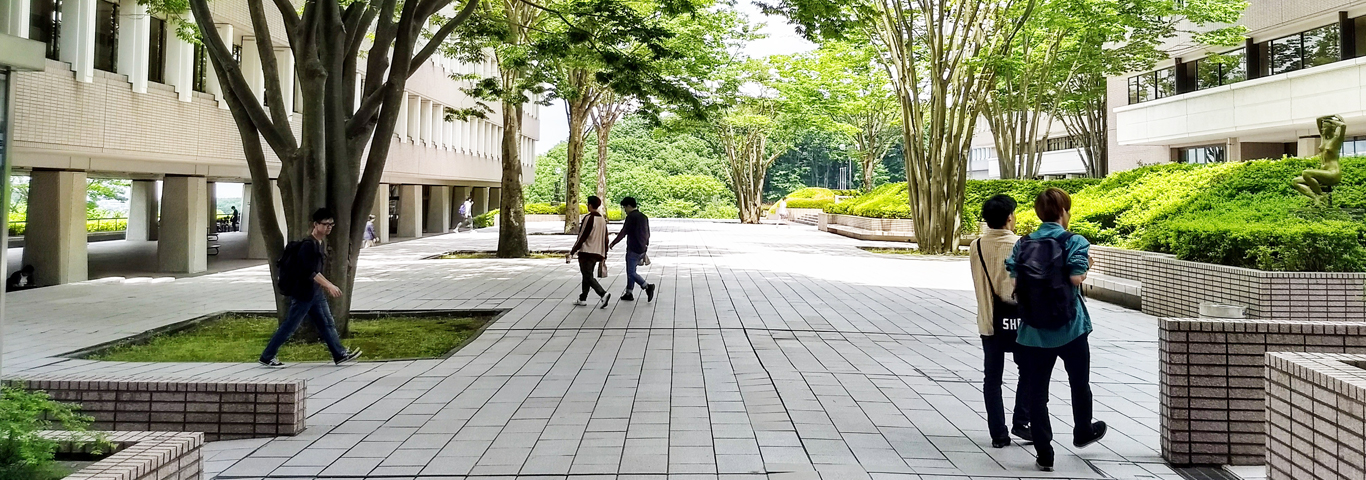大学院バイオニクス専攻生らが学会「Society of Free Radical Research Australasia & Japan 7th Joint Meeting」で「Young Investigator Award」を受賞

2015年12月7-10日にニュー ジーランドのクライストチャーチで開催された学会「Society of Free Radical Research Australasia & Japan 7th Joint Meeting」で、山本研究室の飯田沙也加さん(D1) と藤沢研究室の渡辺真実さん(M2)が、若手奨励賞にあたる「Young Investigator Award」を受賞しました。
論文タイトル:Urate-4,5-dioxetane is the precursor of parabanic acid, a singlet oxygen specific oxidation product of uric acid
Sayaka Iida, Yuki Ohkubo, Yorihiro Yamamoto, Akio Fujisawa
論文概要:Singlet oxygen is generated by not only photosensitization but also two electron oxidation of hydrogen peroxide induced by hypochlorite or peroxynitrite and can damage lipids, proteins, and nucleic acids in vivo. Uric acid is believed to be one of the most important scavengers of singlet oxygen. We have demonstrated that parabanic acid is a singlet oxygen specific oxidation product of uric acid and it is hydrolysed to oxaluric acid. In this study, we found that oxidation of uric acid by singlet oxygen produces urate-4,5-dioxetane and its chemical structure was confirmed by LC/MS/MS analysis. Isolated urate-4,5-dioxetane was converted to parabanic acid by a ℬ-cleavage reaction of dioxetane. Since the detection of urate-4,5-dioxetane, parabanic acid, and oxaluric acid at pmol levels was achieved, we are currently applying this method to biological samples.
論文タイトル:Detection of oxidation products of edaravone at fmol levels by LC/MS/MS
Mami Watanabe, Yorihiro Yamamoto, Akio Fujisawa
論文概要:We have demonstrated that a free radical scavenger drug, edaravone (3-methyl-1-phenyl-2-pyrazolin-5-one) produces reactive oxygen species-specific oxidation products: 4-oxoedaravone and its hydrolysed product, 2-oxo-3-(phenylhydrazono)-butanioc acid (OPB) by peroxyl radicals; 4-NO-edaravone and 4-NO₂-edaravone by peroxynitrite; 4-Cl-edaravone by hypochlorite. Therefore, these products can be a good marker of each ROS formation in vivo. In this study, HPLC equipped with triple-quadrupole mass spectrometry (LC/MS/MS) was performed to analyse these products. Previous LC/MS/MS analysis, OPB, 4-NO-adduct, 4-NO₂-adduct or 4-Cl- adduct was synthesized by edaravone oxidation induced by AMVN, peroxynitrite, and sodium hypochlorite respectively. Each compound was isolated and purified by reverse phase HPLC. When OPB, 4-NO-adduct, 4-NO₂-adduct, or 4-Cl-adduct was analysed by LC/MS/MS, precursor anion corresponding to each compound was detected at Q1 MS. Its m/z value was -205, -202,-218, and -207 respectively. Furthermore, each specific fragment anion was also detected at Q3 MS, and its m/z value was -92, -42, -46, and -35 respectively. Using these fragment anions, high-sensitive analysis was performed. As the results, every product was detectable at least fmol level. We are currently applying this method to biological samples.

■大学院バイオニクス専攻WEB
https://www.teu.ac.jp/grad/bs/index.html


